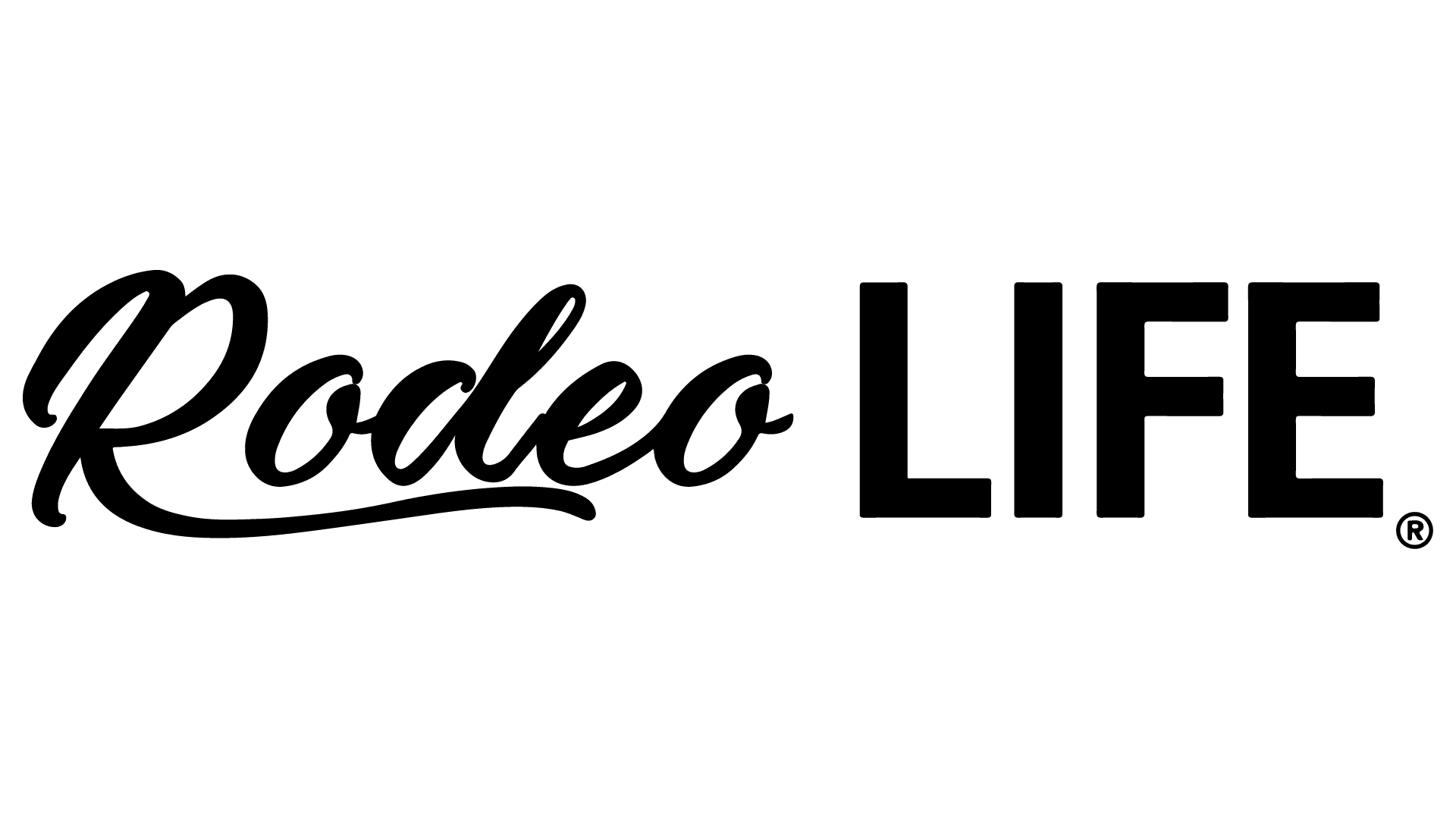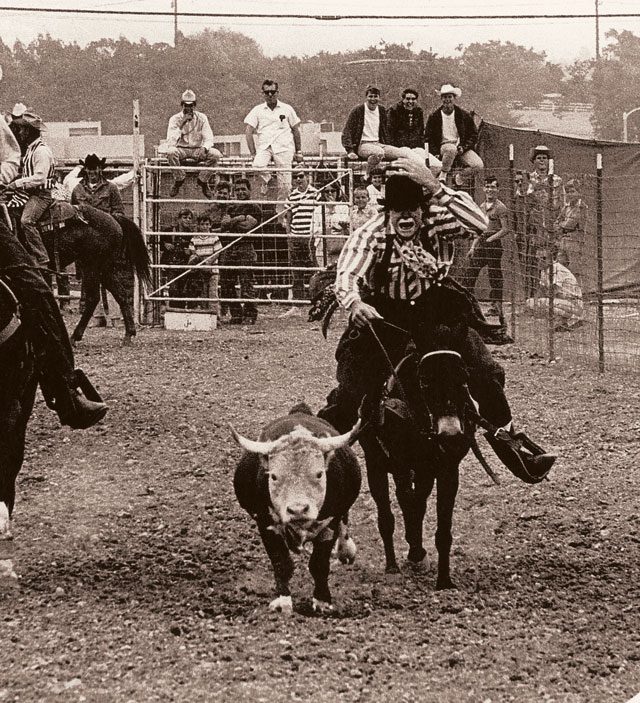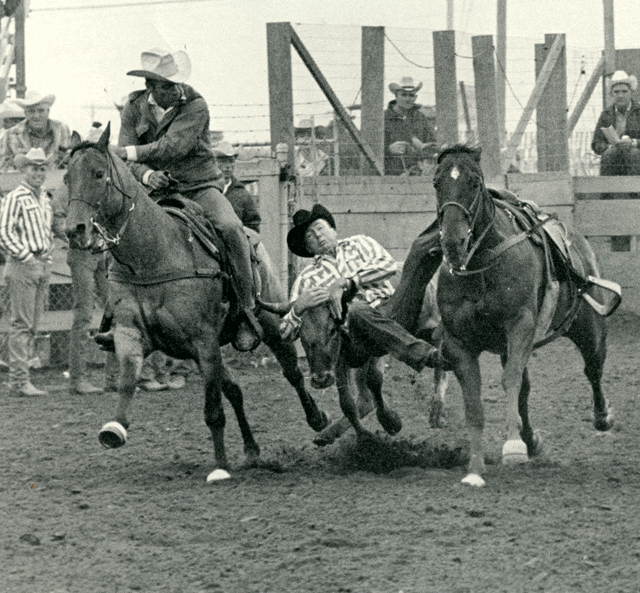
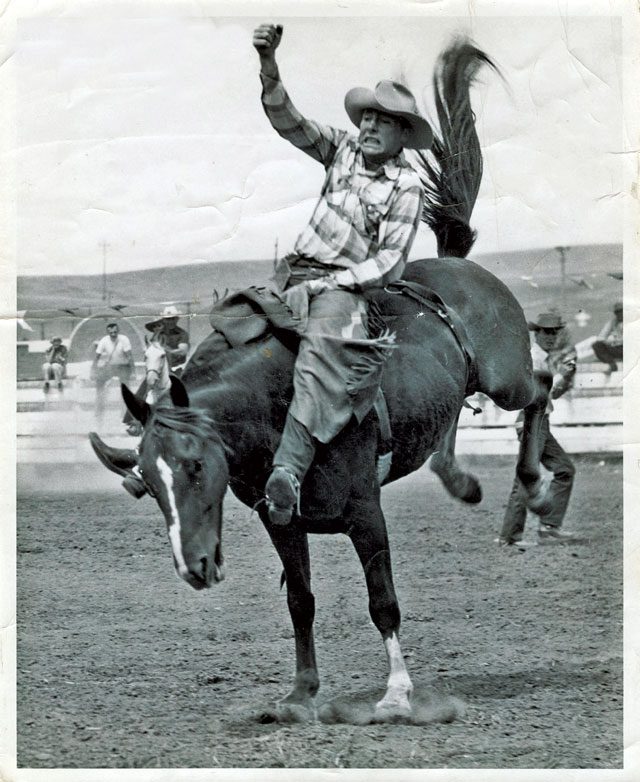
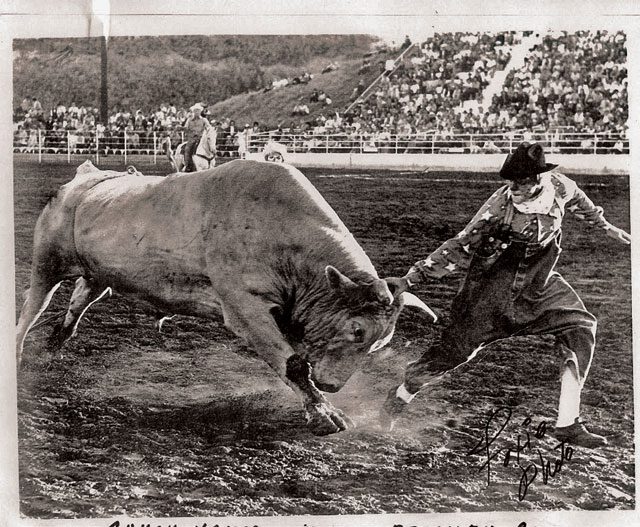
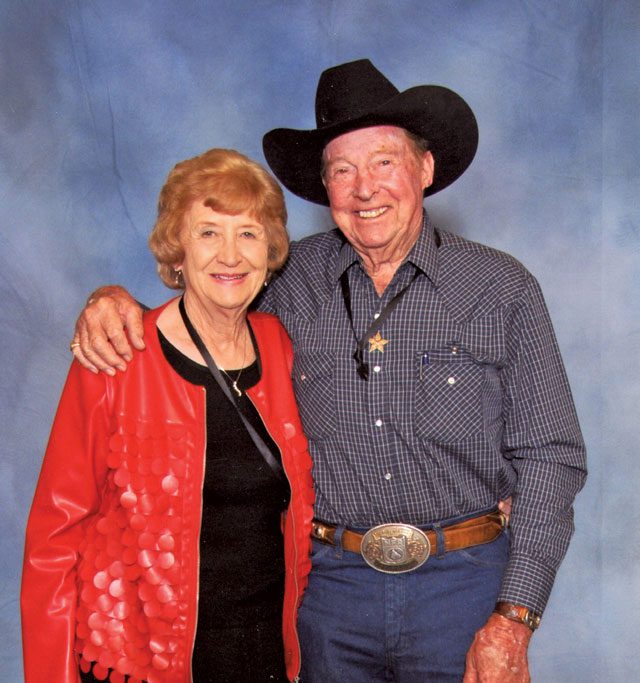
story by Lily Weinacht
Chuck Henson’s cowboy boots and bullfighting cleats have left their mark through rodeo history. From witnessing the Boston Garden Rodeo strike in 1936 to becoming the first contract member director in the PRCA, Chuck has spent a lifetime championing the sport of rodeo, even bringing the cowboy life to the silver screen through his work as a Hollywood stuntman, wrangler, and driver.
The only child of Charlie and Margie Henson, Chuck was born in Arcadia, Fla., on February 4, 1931. Charlie Henson worked on the railroad and rodeoed during the winter. Margie (Greenough) Henson rode saddle broncs, formerly trick riding and competing in rodeos with her sister, Alice, and brothers, Bill and Turk, the siblings known as The Ridin’ Greenoughs. Several weeks after Chuck was born, the family packed up their Model A Ford Roadster and returned to their home in Red Lodge, Mont.
Chuck was given a pony at an early age, and he was soon trick riding and roping from Blue Rocket’s back. One of his first experiences as rodeo entertainment was in 1940 at the Cowboy Coliseum in Chicago, where Chuck and nine other kids put on a show of trick riding and roping during the 30-day rodeo. The family also travelled as far as Canada and Mexico with Wild West Shows. “Mom would never let me ride broncs because she was afraid I would get hurt,” Chuck recalls. “It didn’t make much sense to me. She let me rope calves, but I probably would’ve been better off riding broncs. I was so little that every time I’d rope a calf, they’d meet me halfway and wreck me.”
When Chuck wasn’t travelling the country, he travelled the mountain pastures of Montana for five years, helping his uncles, Bill and Frank, who worked for The Antler Ranch, one of the largest cattle ranches in the state at the time. By the time he entered high school at Lodge Grass High School, Chuck was an all-around athlete, rodeoing, playing basketball, baseball, and running track, which later earned him an induction into the Montana Sports Hall of Fame. Chuck steer wrestled like his dad, but the chutes held too much of a draw, and he started riding bareback and saddle broncs. Roughstock had come a long way since the time Chuck’s parents started, when broncs were tied to another horse and blindfolded, then turned loose into arenas made by a circle of buggies, wagons, and old cars.
For a time, Chuck competed in or worked every rodeo event, though he drew the line at riding bulls. “I didn’t cherish the thought of getting on a bull, but I saw you could get good money for riding them, so I started, and that was probably my best event,” says Chuck. “There weren’t any rodeo schools, but I remember a few times I’d draw a horse in the saddle bronc riding and I’d have to ask my mom what kind of a rein to take on it – it was a little different to ask your mom how to ride a bronc!” He entered many of the same rodeos as his parents and also worked as a pickup man during high school, even picking up his mom and Aunt Alice. “You’d get a spanking if you didn’t pick them up good,” he recalls with a laugh.
Chuck graduated high school in 1950 and won the Montana High School All-Around Cowboy title that year. Soon after, his family moved to Tucson, Ariz. Margie had developed a spot on her lung and was told to move to a warmer climate, though Chuck returned to rodeo in Montana every summer. In 1953 in Sidney, Mont., Chuck was behind the chutes when two gentleman approached him, informing him he hadn’t been in contact with his draft board. “I said I’d been rodeoing!” Chuck remembers. “I joined the National Guard for two years and then the Army. I don’t know how it happened, but I got into the Army Security Agency, and everything was top secret. I’ve never even told my wife or kids what we did.”
Chuck was discharged in 1955 and used his G.I. Bill to go to the University of Arizona to play college football and rodeo for a year. In 1956 the team was at a rodeo on the Mexico border that couldn’t afford a rodeo clown. Chuck had clowned for one of his aunt and uncle’s rodeos in Montana during high school, and he offered to step into the role again. “Some of the girls in the theater group got me a shaggy wig, baggy pants, and some greasepaint,” says Chuck. “Swanny Kerby supplied the bucking stock, and after that, he asked me if I wanted to work some rodeos for him.” Chuck remained with the stock contractor for nearly six years before hiring on with stock contractors further east, all while still competing in four or five rodeo events.
About the time Chuck married his wife, Nancy, in 1959, his rodeo clown career was also growing. The couple had met at a college rodeo in Alpine, Texas, two years earlier.
Nancy was there with several girlfriends, taking a break from keeping books for George H.W. Bush’s oil company. A rancher’s daughter, she grew up barrel racing, and after marrying Chuck, she worked as a rodeo secretary and timer. After their first baby, Nancy Jane, was born, Chuck had a custom camper built for his truck to double as a dressing room. His mule, Nicodemus, and dogs, including one he called Beatrice, rode in a separate section near the tailgate. “Nick was a hard-headed little devil – sometimes he worked good, and sometimes he didn’t,” says Chuck. “Beatrice was pretty famous around the rodeo world – she skipped rope and jumped through hoops and walked on her hind legs.”
Chuck was asked to fight bulls at the NFR in Oklahoma City in 1968 and again in 1971. Two years later, he broke his left leg at a rodeo in Vernon, Texas, when a bull hooked his leg between two boards of a fence. A surgeon in Wichita Falls, Texas, put him back together with rods, mesh, and a hip cast. Chuck was fighting bulls four months later. “I had a special cast made that fit between my ankle and my knee,” Chuck recalls. “I couldn’t run real fast, but I could still go in circles!”
From 1974 to 1977 Chuck served on the PRCA board of directors as the first contract member director, where he represented the specialty acts. “I passed a deal that if you worked the finals one year, you had to take a year off and give somebody else the chance – there were a lot of good hands that weren’t as well known that never got picked,” Chuck explains. He was also responsible for having buckles awarded to the bullfighters and clowns, which were sponsored by Lee, Wrangler, and Levi’s. Chuck’s own NFR bullfighting buckle still graces his belt to this day, and his work both in the arena and out earned him inductions into the ProRodeo Hall of Fame in Colorado Springs, Colo., and the National Cowboy Hall of Fame in Oklahoma City, as well as the Pima County Sports Hall of Fame.
Chuck officially retired from fighting bulls in 1980, though he continued to work up to 12 rodeos a year until the late ’90s, and he performed his rodeo clown acts until 2000. After that, he focused his attention on Hollywood, which he had been working for since the 1960s. Chuck’s mom and aunt had driven buggies and wagons during the filming of Little House on the Prairie, along with several movies, and Chuck also made a name for himself in the movie industry. One of his first roles was riding in a posse of Indians. He found more work through word of mouth before getting his card with the Screen Actors Guild after working with John Wayne on El Dorado, released in 1966. “I worked with John Wayne quite a bit – he was a nice guy – and so was Robert Mitchum and Steve McQueen,” says Chuck. “I doubled James Coburn and Slim Pickens in a movie called The Honkers where the rodeo clown breaks his neck. I said I wanted a certain amount of money if I had to let a bull fling me through the air. It took six bulls before the camera man got the shot he wanted.” Chuck wrecked wagons and did stunt falls from horses, and even drove in car chases for shows like Mod Squad. He played himself in a documentary called The Ridin’ Greenoughs, which covered the story of his mother, Alice, and Bill and Turk, all of whom had roles in the documentary, narrated by Rex Allen.
Today, Chuck and Nancy live in Tucson, Ariz., and commute to their ranch near Willcox, Ariz. Their two children, Nancy Jane and Leigh Ann, both rodeo competitors, live nearby. Leigh Ann’s husband, Eric Billingsley, is a former saddle bronc riding champion in the GCPRA. Chuck helps Nancy Jane and her husband, Jerry Dorenkamp, raise bucking horses for their rodeo company, Salt River Rodeo Company, as well as 75 – 80 cows with PBR bloodlines. “I don’t ride much anymore, but I watch Leigh Ann’s girls, Kaylee and Rayna, compete in the GCPRA,” says Chuck. “I’m pretty happy, and I’m really proud of my family!”
